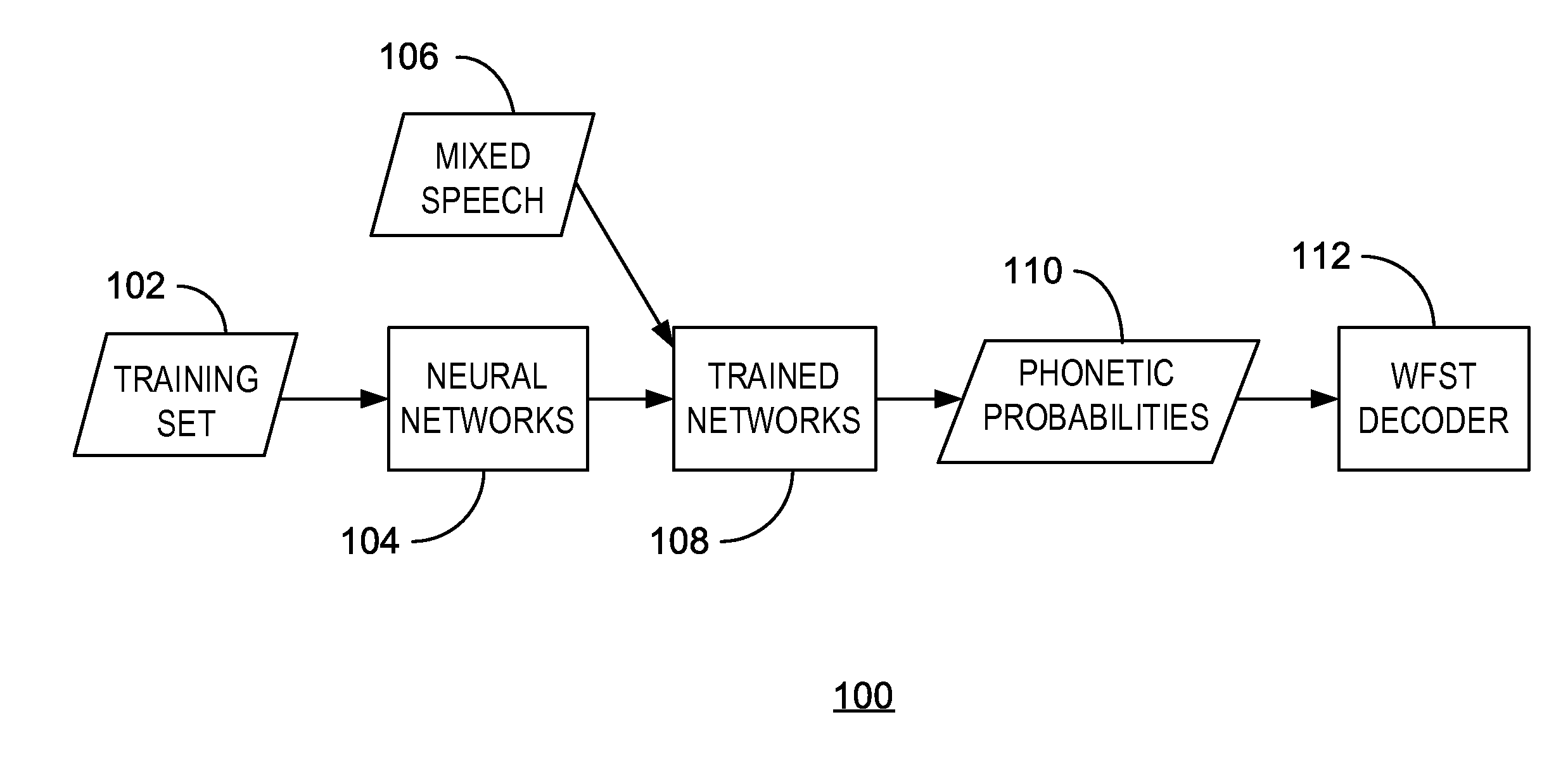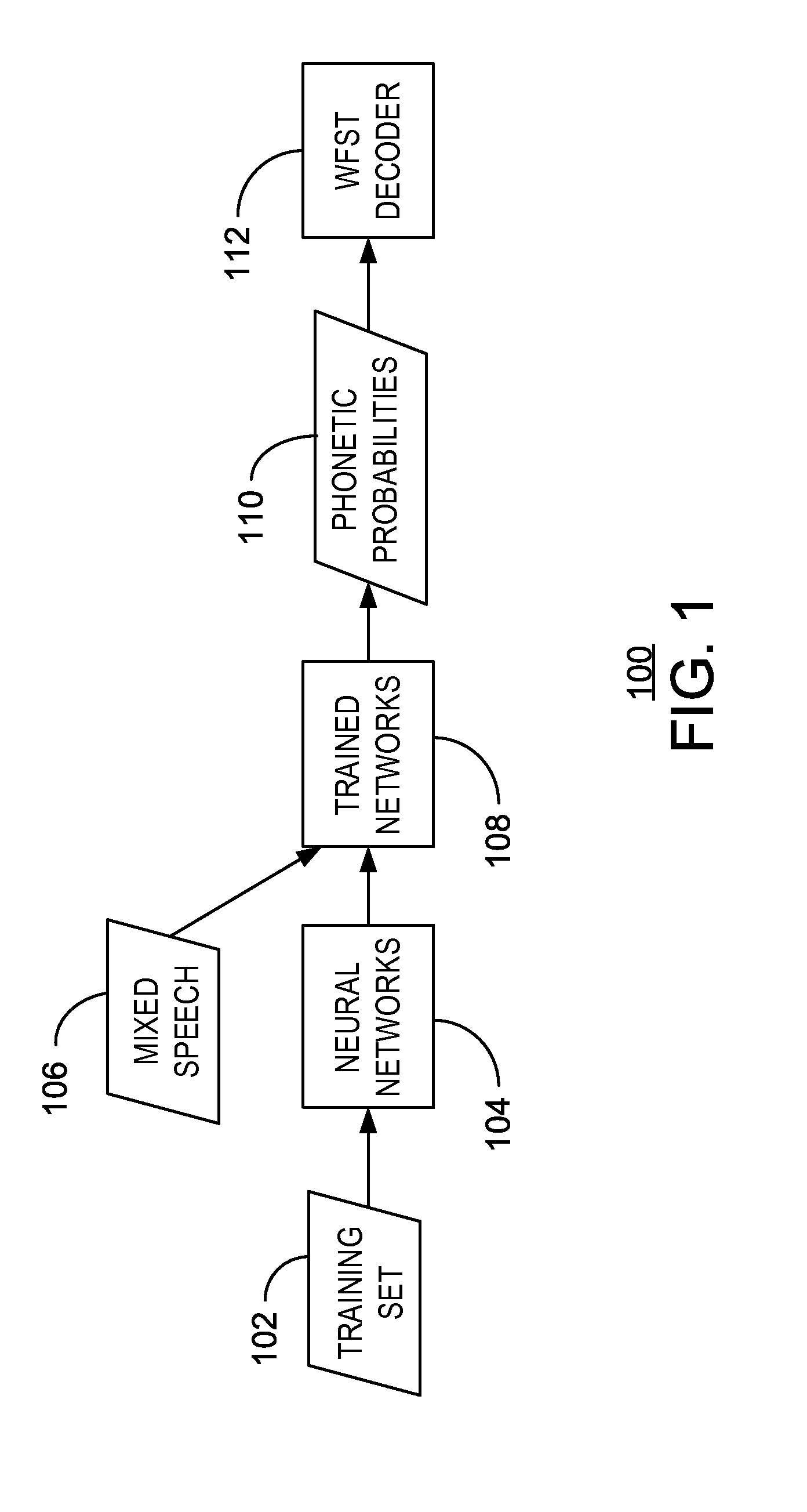Mixed speech recognition
a speech recognition and mixed technology, applied in speech recognition, speech analysis, instruments, etc., can solve the problems of poor generalization of neural network-based models trained on single-speaker speech, poor robustness, and poor robustness
- Summary
- Abstract
- Description
- Claims
- Application Information
AI Technical Summary
Benefits of technology
Problems solved by technology
Method used
Image
Examples
example implementation
4.1. Example Implementation
[0039]In an example implementation, the speech data is drawn from GRID corpus. The training set 102 contains 17,000 clean speech utterances from 34 difference speakers (500 utterances for each speaker). The evaluation set includes 4,200 mixed speech utterances in 7 conditions, clean, 6 dB, 3 dB, 0 dB, −3 dB, −6 dB, −9 dB target-to-mask ratio (TMR), and the development set contains 1,800 mixed speech utterances in 6 conditions (no clean condition). The fixed grammar contains six parts: command, color, preposition, letter (with W excluded), number, and adverb, e.g. “place white at L 3 now”. During the test phase, the speaker who utters the color ‘white’ is treated as the target speaker. The evaluation metric is the WER on letters and numbers spoken by the target speaker. Note that the WER on all words is lower, and unless otherwise specified, all reported WERs in the following experiments are the ones evaluated only on letters and numbers.
4.2. Baseline Syste...
PUM
 Login to View More
Login to View More Abstract
Description
Claims
Application Information
 Login to View More
Login to View More - R&D
- Intellectual Property
- Life Sciences
- Materials
- Tech Scout
- Unparalleled Data Quality
- Higher Quality Content
- 60% Fewer Hallucinations
Browse by: Latest US Patents, China's latest patents, Technical Efficacy Thesaurus, Application Domain, Technology Topic, Popular Technical Reports.
© 2025 PatSnap. All rights reserved.Legal|Privacy policy|Modern Slavery Act Transparency Statement|Sitemap|About US| Contact US: help@patsnap.com



